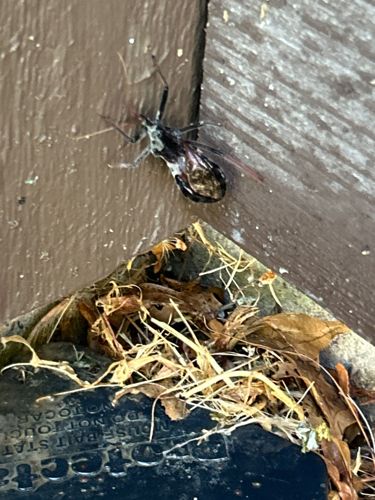Wheel Bug
Scientific Name: Arilus cristatus
Order & Family: Order: Hemiptera, Family: Reduviidae (Assassin Bugs)
Size: Adults typically range from 25 to 38 mm (1 to 1.5 inches) in length, making them one of the largest true bugs in North America.

Natural Habitat
Wheel bugs are commonly found in gardens, agricultural fields, forests, and other areas with abundant vegetation and insect prey. They often hide among leaves and stems, blending in with their surroundings.
Diet & Feeding
The wheel bug is a generalist predator, feeding on a wide variety of insects, including caterpillars, beetles, flies, true bugs (including pest species like squash bugs, stink bugs, and Japanese beetles), and even other assassin bugs. They are considered beneficial insects in gardens due to their predatory habits on pest insects.
Behavior Patterns
Wheel bugs are solitary predators. They capture prey using their raptorial forelegs and then pierce the prey with their rostrum to inject a potent saliva that paralyzes and digests the internal tissues. They then suck out the liquefied contents. While generally slow-moving, they are effective ambush predators. They undergo incomplete metamorphosis, with nymphs resembling smaller, wingless versions of the adults.
Risks & Benefits
Potential risks: While wheel bugs are beneficial predators, they can inflict a very painful bite if handled carelessly or provoked. Their bite is comparable to a bee or wasp sting and can cause localized pain, swelling, and redness, which may last for several days. However, they are not venomous in a way that is dangerous to humans and do not transmit diseases. Benefits: Wheel bugs are highly beneficial insects for pest control in gardens and agriculture, preying on many common insect pests and reducing the need for chemical pesticides.
Identified on: 9/1/2025